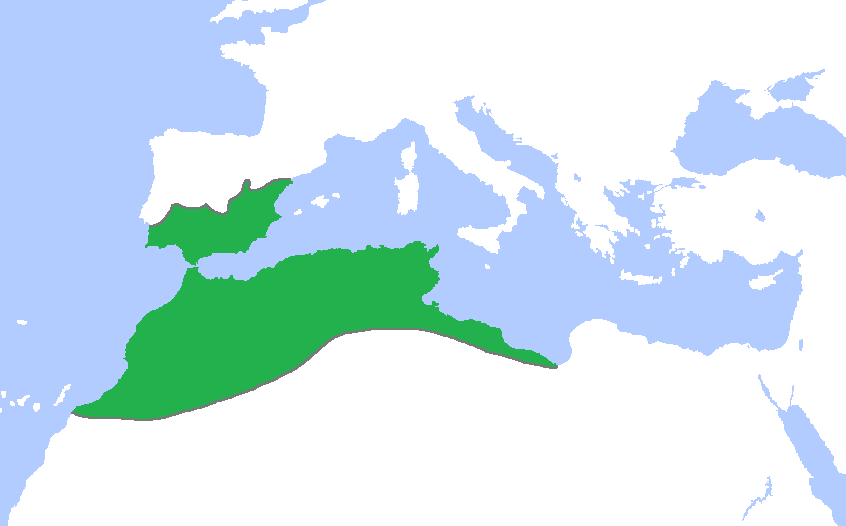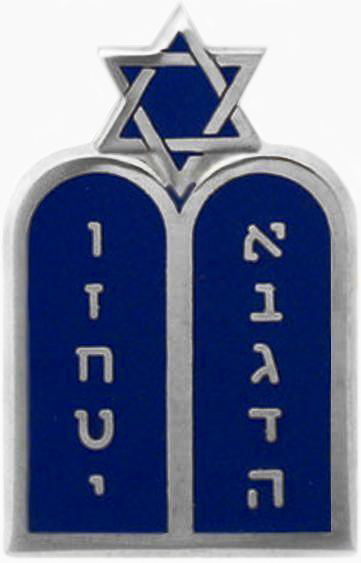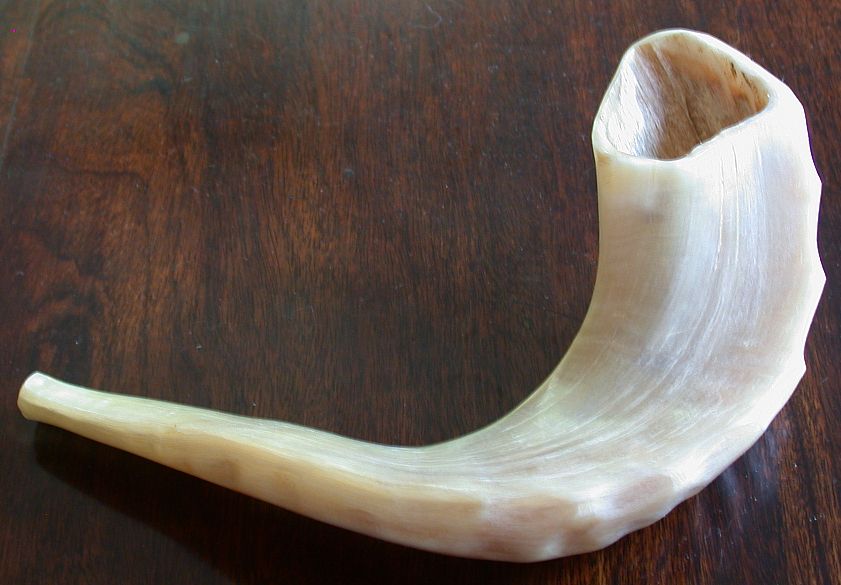|
Hebrew Acronyms
Abbreviations () are a common part of the Hebrew language, with many organizations, places, people and concepts known by their abbreviations. Typography Acronyms in Hebrew use a special punctuation mark called gershayim (). This mark is placed between the last two letters of the non-inflected form of the acronym (e.g. "report" in singular is , hence the plural ). Acronyms can be formed from strings of single initial letters, e.g. (for ), or multiple initial letters, e.g. (for , the Holy Land) or (for , Rishon LeZion). If the acronym is read as is, then the spelling should be with a final form letter. If, on the other hand, the acronym is read as the complete phrase or read as the individual letters, then it should be spelled with a medial form letter. In practice, this rule is often ignored, and the acronyms spelled either way. Abbreviations that are truncations of a single word, consisting of the first letter or first several letters of that word (as opposed to acronyms f ... [...More Info...] [...Related Items...] OR: [Wikipedia] [Google] [Baidu] |
Abbreviation
An abbreviation () is a shortened form of a word or phrase, by any method including shortening (linguistics), shortening, contraction (grammar), contraction, initialism (which includes acronym), or crasis. An abbreviation may be a shortened form of a word, usually ended with a trailing period. For example, the term ''etc.'' is the usual abbreviation for the list of Latin phrases, Latin phrase . Types A ''Contraction (grammar), contraction'' is an abbreviation formed by replacing letters with an apostrophe. Examples include ''I'm'' for ''I am'' and ''li'l'' for ''little''. An ''initialism'' or ''acronym'' is an abbreviation consisting of the initial letter of a sequence of words without other punctuation. For example, Federal Bureau of Investigation, FBI (wiktionary:FBI#Pronunciation, ), United States, USA (wiktionary:USA#Pronunciation, ), IBM (wiktionary:IBM#Pronunciation, ), BBC (wiktionary:BBC#Pronunciation, ). When initialism is used as the preferred term, acronym refers mor ... [...More Info...] [...Related Items...] OR: [Wikipedia] [Google] [Baidu] |
United Nations
The United Nations (UN) is the Earth, global intergovernmental organization established by the signing of the Charter of the United Nations, UN Charter on 26 June 1945 with the stated purpose of maintaining international peace and international security, security, to develop friendly Diplomacy, relations among State (polity), states, to promote international cooperation, and to serve as a centre for harmonizing the actions of states in achieving those goals. The United Nations headquarters is located in New York City, with several other offices located in United Nations Office at Geneva, Geneva, United Nations Office at Nairobi, Nairobi, United Nations Office at Vienna, Vienna, and The Hague. The UN comprises six principal organizations: the United Nations General Assembly, General Assembly, the United Nations Security Council, Security Council, the United Nations Economic and Social Council, Economic and Social Council, the International Court of Justice, the United Nations Se ... [...More Info...] [...Related Items...] OR: [Wikipedia] [Google] [Baidu] |
Rabbi
A rabbi (; ) is a spiritual leader or religious teacher in Judaism. One becomes a rabbi by being ordained by another rabbi—known as ''semikha''—following a course of study of Jewish history and texts such as the Talmud. The basic form of the rabbi developed in the Pharisees, Pharisaic (167 BCE–73 CE) and Talmudic (70–640 CE) eras, when learned teachers assembled to codify Judaism's written and oral laws. The title "rabbi" was first used in the first century CE. In more recent centuries, the duties of a rabbi became increasingly influenced by the duties of the Clergy, Protestant Christian minister, hence the title "pulpit rabbis." Further, in 19th-century Germany and the United States, rabbinic activities such as sermons, pastoral counseling, and representing the community to the outside all increased in importance. Within the various Jewish denominations, there are different requirements for rabbinic ordination and differences in opinion regarding who is recognized as a ... [...More Info...] [...Related Items...] OR: [Wikipedia] [Google] [Baidu] |
Baal Shem Tov
Israel ben Eliezer (According to a forged document from the "Kherson Geniza", accepted only by Chabad, he was born in October 1698. Some Hasidic traditions place his birth as early as 1690, while Simon Dubnow and other modern scholars argue for a date around 1700. –1760), known as the Baal Shem Tov (; ) or BeShT (), was a Jewish mystic and healer who is regarded as the founder of Hasidic Judaism. A ''baal shem tov'' is a "Master of the Good Name," that is, one able to work miracles using the secret name of God. Other sources explain his sobriquet as arising from a reputation of being a saintly, or superior, Baal Shem "miracle-worker", hence he was given the nickname Baal Shem ''Tov'', the "good Baal Shem". Biographical information about the Baal Shem Tov comes from contemporary documents from the Polish–Lithuanian Commonwealth and the legendary traditions about his life and behavior collected in the ''Praise of the Besht'' (). A central tenet of the teachings associa ... [...More Info...] [...Related Items...] OR: [Wikipedia] [Google] [Baidu] |
Nahmanides
Moses ben Nachman ( ''Mōše ben-Nāḥmān'', "Moses son of Nachman"; 1194–1270), commonly known as Nachmanides (; ''Nakhmanídēs''), and also referred to by the acronym Ramban (; ) and by the contemporary nickname Bonastruc ça Porta (; literally " Mazel Tov near the Gate", see ), was a leading medieval Jewish scholar, Catalan rabbi, philosopher, physician, kabbalist, and biblical commentator. He was raised, studied, and lived for most of his life in Girona, Catalonia. He is also considered to be an important figure in the re-establishment of the Jewish community in Jerusalem following its destruction by the Crusaders in 1099. Name "Nachmanides" () is a Greek-influenced formation meaning "son of Nahman". He is also commonly known by the Hebrew acronym (Ra-M-Ba-N, for ''Rabbeinu Mōšeh bēn-Nāḥmān'', "Our Rabbi Moses son of Nahman"). His Catalan name was (also written or ), literally " Mazel Tov near the Gate". Biography Nachmanides was born in Girona in 1 ... [...More Info...] [...Related Items...] OR: [Wikipedia] [Google] [Baidu] |
Maimonides
Moses ben Maimon (1138–1204), commonly known as Maimonides (, ) and also referred to by the Hebrew acronym Rambam (), was a Sephardic rabbi and Jewish philosophy, philosopher who became one of the most prolific and influential Torah scholars of the Middle Ages. In his time, he was also a preeminent astronomer and physician, serving as the personal physician of Saladin. He was born on Passover eve 1138 or 1135, and lived in Córdoba, Spain, Córdoba in al-Andalus (now in Spain) within the Almoravid dynasty, Almoravid Empire until his family was expelled for refusing to convert to Islam. Later, he lived in Morocco and Egypt and worked as a rabbi, physician and philosopher. During his lifetime, most Jews greeted Maimonides' writings on Halakha, Jewish law and Jewish ethics, ethics with acclaim and gratitude, even as far away as Iraq and Yemen. Yet, while Maimonides rose to become the revered head of the History of the Jews in Egypt, Jewish community in Egypt, his writings also ... [...More Info...] [...Related Items...] OR: [Wikipedia] [Google] [Baidu] |
Rashi
Shlomo Yitzchaki (; ; ; 13 July 1105) was a French rabbi who authored comprehensive commentaries on the Talmud and Hebrew Bible. He is commonly known by the List of rabbis known by acronyms, Rabbinic acronym Rashi (). Born in Troyes, Rashi studied Torah studies in Worms, Germany, Worms under German rabbi Yaakov ben Yakar and French rabbi Isaac ben Eliezer Halevi, both of whom were pupils of the famed scholar Gershom ben Judah. After returning to Troyes, Rashi joined the , began answering Halakha, halakhic questions and later served as the 's head after the death of Zerach ben Abraham. Rashi is generally considered a leading biblical exegete in the Middle Ages. Acclaimed for his ability to present the basic meaning of the text in a concise and lucid fashion, Rashi's commentaries appeal to both learned scholars and beginning students, and his works remain a centerpiece of contemporary Torah study. A large fraction of rabbinic literature published since the Middle Ages discusses Ra ... [...More Info...] [...Related Items...] OR: [Wikipedia] [Google] [Baidu] |
Rabbi
A rabbi (; ) is a spiritual leader or religious teacher in Judaism. One becomes a rabbi by being ordained by another rabbi—known as ''semikha''—following a course of study of Jewish history and texts such as the Talmud. The basic form of the rabbi developed in the Pharisees, Pharisaic (167 BCE–73 CE) and Talmudic (70–640 CE) eras, when learned teachers assembled to codify Judaism's written and oral laws. The title "rabbi" was first used in the first century CE. In more recent centuries, the duties of a rabbi became increasingly influenced by the duties of the Clergy, Protestant Christian minister, hence the title "pulpit rabbis." Further, in 19th-century Germany and the United States, rabbinic activities such as sermons, pastoral counseling, and representing the community to the outside all increased in importance. Within the various Jewish denominations, there are different requirements for rabbinic ordination and differences in opinion regarding who is recognized as a ... [...More Info...] [...Related Items...] OR: [Wikipedia] [Google] [Baidu] |
Middle Ages
In the history of Europe, the Middle Ages or medieval period lasted approximately from the 5th to the late 15th centuries, similarly to the post-classical period of global history. It began with the fall of the Western Roman Empire and transitioned into the Renaissance and the Age of Discovery. The Middle Ages is the middle period of the three traditional divisions of Western history: classical antiquity, the medieval period, and the modern period. The medieval period is itself subdivided into the Early, High, and Late Middle Ages. Population decline, counterurbanisation, the collapse of centralised authority, invasions, and mass migrations of tribes, which had begun in late antiquity, continued into the Early Middle Ages. The large-scale movements of the Migration Period, including various Germanic peoples, formed new kingdoms in what remained of the Western Roman Empire. In the 7th century, North Africa and the Middle East—once part of the Byzantine Empire� ... [...More Info...] [...Related Items...] OR: [Wikipedia] [Google] [Baidu] |
Common Era
Common Era (CE) and Before the Common Era (BCE) are year notations for the Gregorian calendar (and its predecessor, the Julian calendar), the world's most widely used calendar era. Common Era and Before the Common Era are alternatives to the original Anno Domini (AD) and Before Christ (BC) notations used for the same calendar era. The two notation systems are numerically equivalent: " CE" and "AD " each describe the current year; "400 BCE" and "400 BC" are the same year. The expression can be traced back to 1615, when it first appears in a book by Johannes Kepler as the (), and to 1635 in English as " Vulgar Era". The term "Common Era" can be found in English as early as 1708, and became more widely used in the mid-19th century by Jewish religious scholars. Since the late 20th century, BCE and CE have become popular in academic and scientific publications on the grounds that BCE and CE are religiously neutral terms. They have been promoted as more sensitive to non-Christia ... [...More Info...] [...Related Items...] OR: [Wikipedia] [Google] [Baidu] |
Anno Mundi
(from Latin 'in the year of the world'; ), abbreviated as AM or A.M., or Year After Creation, is a calendar era based on biblical accounts of the creation of the world and subsequent history. Two such calendar eras of notable use are: * Since the Middle Ages, the Hebrew calendar has been based on rabbinic calculations of the year of creation from the Hebrew Masoretic Text of the Bible. This calendar is used within Jewish communities for religious purposes and is one of two official calendars in Israel. In the Hebrew calendar, the day begins at sunset. The calendar's epoch, corresponding to the calculated date of the world's creation, is equivalent to sunset on the Julian proleptic calendar date 6 October 3761 BCE. The new year begins at Rosh Hashanah, in Tishrei. 5785 (meaning the 5,785th year since the creation of the world) began at sunset on October 3, 2024, according to the Gregorian calendar. *The Creation Era of Constantinople was observed by Christian communities ... [...More Info...] [...Related Items...] OR: [Wikipedia] [Google] [Baidu] |
Hebrew Calendar
The Hebrew calendar (), also called the Jewish calendar, is a lunisolar calendar used today for Jewish religious observance and as an official calendar of Israel. It determines the dates of Jewish holidays and other rituals, such as '' yahrzeits'' and the schedule of public Torah readings. In Israel, it is used for religious purposes, provides a time frame for agriculture, and is an official calendar for civil holidays alongside the Gregorian calendar. Like other lunisolar calendars, the Hebrew calendar consists of months of 29 or 30 days which begin and end at approximately the time of the new moon. As 12 such months comprise a total of just 354 days, an extra lunar month is added every 2 or 3 years so that the long-term average year length closely approximates the actual length of the solar year. Originally, the beginning of each month was determined based on physical observation of a new moon, while the decision of whether to add the leap month was based on observation ... [...More Info...] [...Related Items...] OR: [Wikipedia] [Google] [Baidu] |








